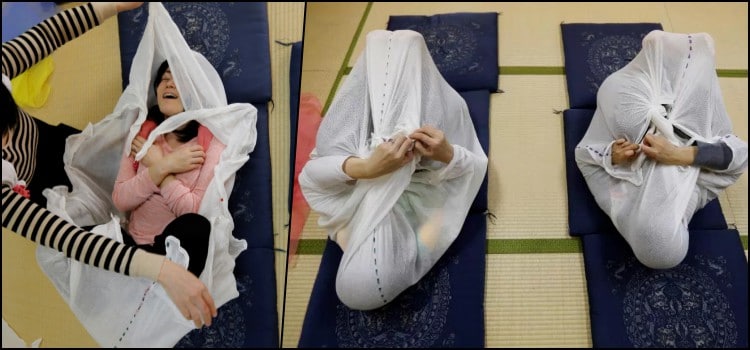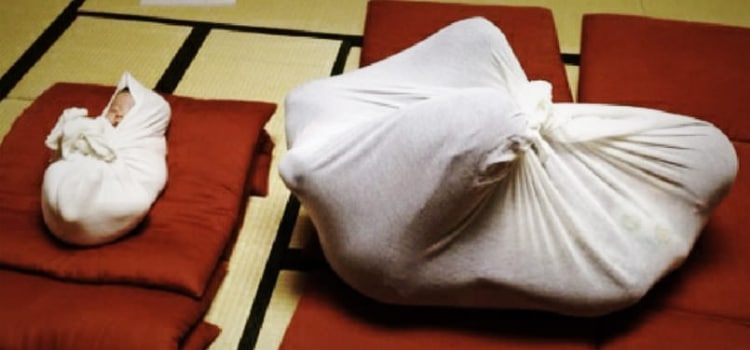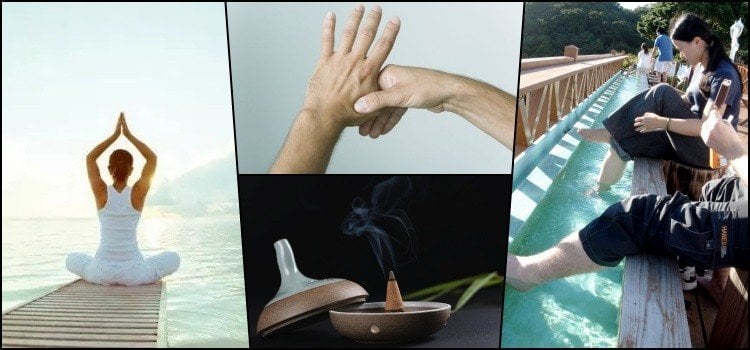Have you ever seen a baby wrapped in cloths? and an adult? This new Japanese therapy promises to correct any type of posture problem, also relieve shoulder and back pain and reduce even the stress. The patient is then tying inside a blanket or cotton knitted fabric. This technique is called Otonamaki (大人巻き) which means "adult wrapping".
She was created by midwife Nobuko Watanabe in 2015, and popularized by physiotherapist Orie Matsuo. Based on another technique practiced in babies called Ohinamaki which involves wrapping newborn babies in cloths to imitate the sense of comfort and well-being of the uterus, helping them to improve sleep and also their physical development.

Índice de Conteúdo
Why resort to Otonamaki?
Japanese people are known for being too dedicated to work, so much so that many develop posture problems and body stiffness. and many try to get a solution to these problems through massages, stretches and therapies. This has made these types of practices very popular.
And in Japan there is no shortage of wellness treatments that may seem unfamiliar to Westerners. strangers inadequate and even not very functional as is the case with Otonamaki. Even though there was no scientific research carried out on the veracity and effectiveness of this new procedure, several people claimed that such therapy helped a lot, since correcting posture, anxiety and even helped mothers with postpartum depression.
Some commented that the results are surprising, ending the pain in the shoulders, neck and back. Not everyone was satisfied with this idea of wrapping up in cloths. &Nbsp; Some thought it was bizarre, others said that this therapy came out of a horror movie.

Otonamaki information
In the beginning the Otonamaki it did not become a popular practice in Japan. It was even compared to the technique of mummification or making references to horror movies. But after it appeared on popular television programs and even in international reports, more and more people are talking and looking for this new therapy.
&Nbsp; sessions last around 20 to 45 minutes, costing around 4,800 yen. But therapy can be tried at home, just wrap yourself in a blanket. But for some experts, the practice of Otonamaki can harm health if not done correctly. Because the way people are wrapped in cloth can cause injury or muscle wasting.
Did you know that the word otonamaki was it a bad word that was out of use in the 1980s? Below we will see a video of Otonamaki in practice:
Other Japanese therapies
Gong therapy (or sound therapy) - It is a sound massage for body and mind, using vibrating frequencies. This procedure promises to help against insomnia, anxiety and stress.
Acupuncture - Even though it is an ancient therapy originating in China, it is very popular with the Japanese, which is basically the application of needles in specific points of the body, serving to treat diseases and improve the personal well-being.
Towel technique - Some use the technique created by Toshiki Fukutsudzi that consists of placing a towel on the back. It is believed that this technique helps in posture and even lose weight. (details in the article on secrets to lose weight).

Chiropractic – Helps to find possible problems with the spine, nerves and joints, through massages. The technique promises to relieve and prevent, for example, neck, shoulders, back pain and even headaches. and it is not used no medicine or surgical procedures.
What do you think of the idea of being sealed in a fetal position on a soft white cloth? Would you like to do some of these therapies? Do you think it really works? We look forward to your comment and sharing. Below we will leave other articles that talk about Japanese therapies and treatments.





